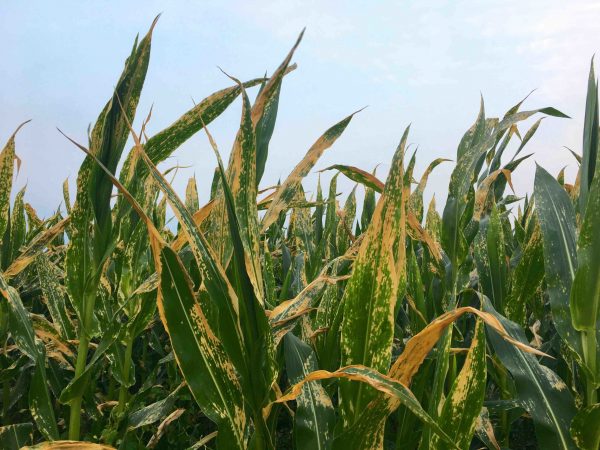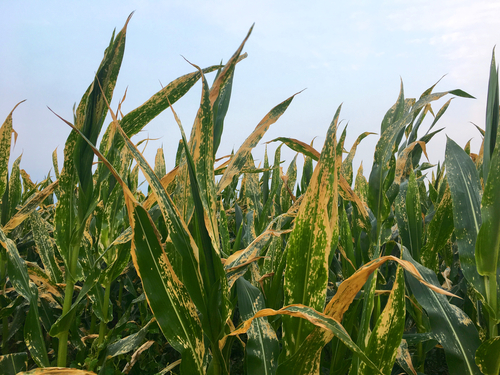
Plant diseases and pests are the largest contributors to crop losses worldwide, with an estimated 27–42% in production systems and potential losses of 48–83% in the absence of crop protection (Oerke and Dehne, 2004). Biocontrol is the use of biological organisms to control plant diseases. The use of biocontrol could help reduce the application of chemical products in agricultural fields.
It is not news that by the year 2050, the global population is expected to reach the planet’s maximum capacity of 9.6 billion. In order to provide food for 2050’s population, the current agricultural supply needs to at least double, in contrast to the decline in arable land. Therefore, new inputs that have the potential to maximise yields while minimising the resources required, are urgently needed. Furthermore, it is obvious that a more sustainable approach to agriculture is desirable in order to minimise the impact on our planet, which ultimately is our source of food. For these reasons, microbial products are now in the spotlight as they offer the opportunity for protecting against crop diseases in a sustainable manner, whilst minimising the environmental footprint.
As a consequence of the Green Revolution in 1960, the chemical crop protection market value was ~$10Bn for ~100 active ingredients. Today, the industry is valued $50Bn for ~600 active ingredients (Phillips McDougall Database, November 2018). However, over the past years, in order to protect the environment and human safety, chemical products are being banned and the rate of registration of new active ingredients is decreasing. The regulation in the EU has made the application process of new active ingredients especially restrictive. Moreover, the 1991 directive 91/414 led to the removal of more than half of the active ingredients for crop protection products in the EU (Phillips McDougal, 2018). This restrictive scenario eases the implementation of “non-chemical” control of diseases and fertilisation of crops. Although biopesticides sales are a small fraction (5.6% in 2016) of the total crop protection sales, this market has grown 2900% since 1990 and it is growing at CAGR of ~16%. This fast-growing pace signifies the increasing trust of growers in this type of products. (Phillips McDougall/Dunham Trimmer).
Biological crop protection
Non-chemical solutions or biological control products can be divided in four categories according to their nature (find out more): 1) Macrobials – include predators, parasites and nematodes, and are living organisms that naturally protect the crops; 2) Microbes — include viruses, bacteria and fungi, and these are naturally found in the environment; 3) Semiochemicals — are pheromones or plant volatile metabolites, and are generally used by the plant as a communication tool; and 4) Natural & biochemical products — include botanicals or natural substances. FungiAlert is an expert in microbes and aims to greatly contribute to the microbial biological control market offer.
Plants are supported by a vast network of bacteria, viruses and fungi that live in synergy with their roots, stems, leaves, seeds, pollen, fruits and flowers. These interdependent communities have evolved together. Microbes are key for plant health, and for protecting them from pathogens attacks’, acting as probiotics. In fact, microbial/plant partnerships are key to helping plants resist biological threats. In the simplest cases, harmless microbes can occupy ecological niches physically avoiding the colonisation by pathogens. More sophisticated mechanisms of protection include the natural production of antibiotic or antifungal compounds by microbes in the root zone. Some microbes can also trigger the plant immune defence, or alert neighbouring plants about the presence of harmful pathogens. Furthermore, some microbes feed from microbial pathogens, eliminating threats directly.
Microbes as biocontrol

Some examples of microbes that can act as probiotics are:
- Bacteria are the most abundant form of biomass in soil. They are very versatile, and some of the functions associated with this type of microbes are:
- procurement of nutrients and minerals for the plants
- production of hormones or compounds that promote plant growth
- stimulation of the immune system of plant and modulation of stress responses.
They participate in complex communities, that synchronise their activities to their benefit and plant survival. In these communities, for example, a member can be acting as a pathogen attractor while others produce and secrete antibiotics, and a third one can produce microbial food. The communities are normally forming bacterial biofilms.
- Fungi live not only around plants in the soil, but also inside them (endophytic fungi). For instance, arbuscular mycorrhizae are found in association with roots in 80% of the plants. These fungi form long filaments that behave as an extension of the plant, and can fetch nutrients, minerals and water for the plant host. Endophytic fungi can also live in plant tissue above ground such as Clavicipitaceae, which form intercellular networks with partner grasses and produce toxins to deter predators. Ectomycorrhizal fungi do not live within the plant tissue – they protect plants against pathogens and acquire water and nutrients for the plant host. Besides occupying an environmental niche within or around the plant roots, and physically avoiding pathogens to enter and infect the plant, some fungal species are natural competitors of pathogens. These mycoparasitic fungi can feed on other fungi, ultimately eliminating pathogenic threads.
FungiAlert discovers better biocontrol microbes
FungiAlert’s unique technology, the SporSenZ, samples active and dominant microbes from soils. This sampling approach provides unique information about the microbial communities present in different agricultural settings. Using this information, FungiAlert identifies and characterises microorganisms that can act against crop pathogens. In fact, FungiAlert has identified superior microbial candidates for the protection of root rot in citrus crops, against Fusarium oxysporum in field vegetables, and against root rots in berry crops.
These microorganisms can then be developed into biocontrol products to help protect crops in a sustainable way. Because FungiAlert samples the microbes from agricultural settings, the biocontrol products developed by FungiAlert will be effective against the crop pathogens found in fields. Using this approach for microbial discovery, FungiAlert aims to make an impact in agriculture and help to increase yields sustainably.
Angela de Manzanos, CTO
August 2020


